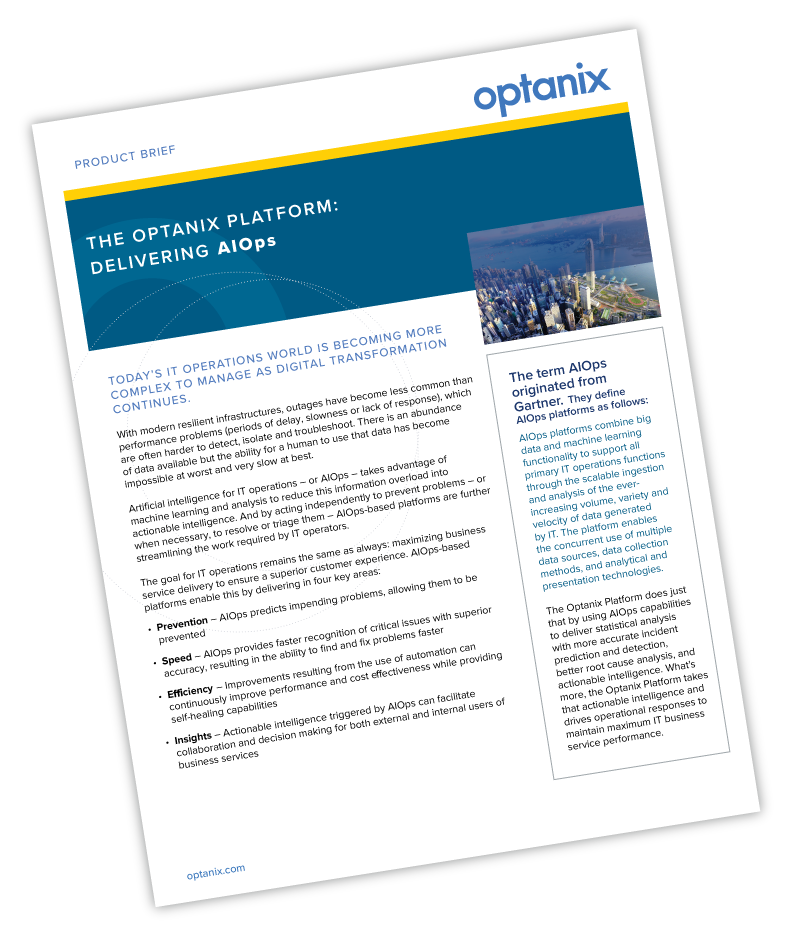
5 IT Operations Improvement Trends to Incorporate in Your 2019 Strategy
Even if you take away the constant distractions and the overwhelming demands of the job, IT operations teams still encounter a wide array of issues upon which they need to stay focused. To help keep you moving in the right direction this year, here are five IT operations improvement trends we recommend you keep in the sights of your periscope. Spoiler alert: they have more to do with your people than with your technology. Following these trends will show you how to improve IT operations over the next year.
IT Operations Improvement Trend #1: Staffing
IT ops is increasingly taking on the role of supporting cloud services in terms of aggregation, customization, integration and governance. A big challenge with cloud services is keeping costs under control. Management will be expecting their ops teams to be doing just that. Rather than focusing solely on engineering and operations, IT ops must develop the capabilities needed to broker services. This will require different roles than old-school operations.
Deploying different skill sets will necessitate different justifications in the coming year. IT ops leaders will need to justify their staffing requirements to IT management in terms of metrics such as business value, connecting staffing levels to performance and strategic objectives.
IT Operations Improvement Trend #2: Automation and AI
We are well past the tipping point where it was possible for a team of humans to monitor and react to performance issues. Tools that continuously monitor all your assets and proactively predict what vulnerabilities are most likely to be exploited – and have the highest business impact – are necessary just to keep up with constantly expanding IT infrastructures. They also add value for keeping pace with the evolving attack methods employed by cybercriminals.
Having established these facts, human beings will be needed more than ever to act on the information that AI and machine learning-based tools produce. Additionally, humans will need to turn their attention to the larger strategy behind their company’s security posture and help the performance-management and security-management programs become more outcome-oriented.
IT Operations Improvement Trend #3: Performance Metrics
Staying with the theme of tying staffing to performance, automation and strategic objectives, IT ops managers will need to come to grips with the critical role that key performance indicators (KPIs) can and should play in driving operational improvement strategies for service and support. This includes the ability to track and trend performance; identify, diagnose and correct performance problems; establish performance goals; and demonstrate the ROI of support.
While many organizations do collect metrics, there are far too many metrics to effectively interpret anything. When it comes to performance metrics, less really is more. The effective analysis of a handful of key KPIs is all that is required to measure, manage and continuously improve your organization’s performance. Let’s drill down on that statement.
If given key metrics such as:
- Cost per ticket
- Customer satisfaction
- First-contact resolution
- Technician utilization
- First-level resolution, and
- Mean time to resolve…
An effective IT ops team can, at a minimum, gain crucial insight into the following areas:
- Tracking and trending performance over time
- Benchmarking performance against industry peers
- Identifying strengths and weaknesses in IT support
- Diagnosing and understanding the underlying drivers of performance gaps
- Prescribing actions to improve performance
- Establishing overall performance goals for technicians and IT support
- Proving the ROI of service and support
In 2019, the leading ops teams will be working hard to ensure that they leverage the insights that they gain to improve their IT operations day to day.
IT Operations Improvement Trend #4: IT Asset Management
CIOs must get on top of – and stay on top of – IT asset management, and also work harder to develop collaborative and information-sharing strategies with end-users. If they don’t, the number of enterprise IT applications could spin out of control, exacerbating performance, data quality, and security risks.
The culprit here? Shadow IT, where end-users upload their data to non-sanctioned cloud applications without help or knowledge from IT. Sources suggest that it comprises as much as in large enterprises. Surveys have revealed that enterprises actually used more than 1,000 cloud apps on average, while their CIOs thought their organizations used between 30 and 40 cloud apps and services.
IT Operations Improvement Trend #5: Site Reliability Engineering
Site Reliability Engineering (SRE) is a discipline that incorporates aspects of software engineering and applies them to IT operations problems. The main goal of SRE is to create ultra-scalable and highly reliable software systems that lead to IT operations improvements.
Traditional IT operations processes do not work at the speed of modern, cloud-native software delivery. That’s why new approaches, particularly SRE, are gaining traction across the industry.
If Site Reliability Engineers have to undertake the same manual steps to restore service to an application more than a couple of times, they will write software to automate the task. And because SREs understand and practice modern software development techniques, the software they write to fix the problem will not be just a clunky shell script, but well-written software with test scaffolding running in a continuous integration environment.
Currently, SRE is a specific approach to IT operations for large-scale, cloud-native software systems. But the practices developed will be applicable to enterprises of all sizes sooner rather than later.
Focus on the Business
The focus of IT ops teams is no longer to solely deliver engineering and operations but, instead, to deliver products and services that support and enable an organization’s business strategy. The challenge in 2019 is to use these operational improvement strategies and advanced capabilities such as artificial intelligence, network automation, asset management and SRE to support rapidly expanding infrastructures while enabling business goals.
For an update on how our projected trends have unfolded, check out how we identify the IT Automation trends shaping 2019.
Ready to enhance your IT operations through the application of artificial intelligence?
